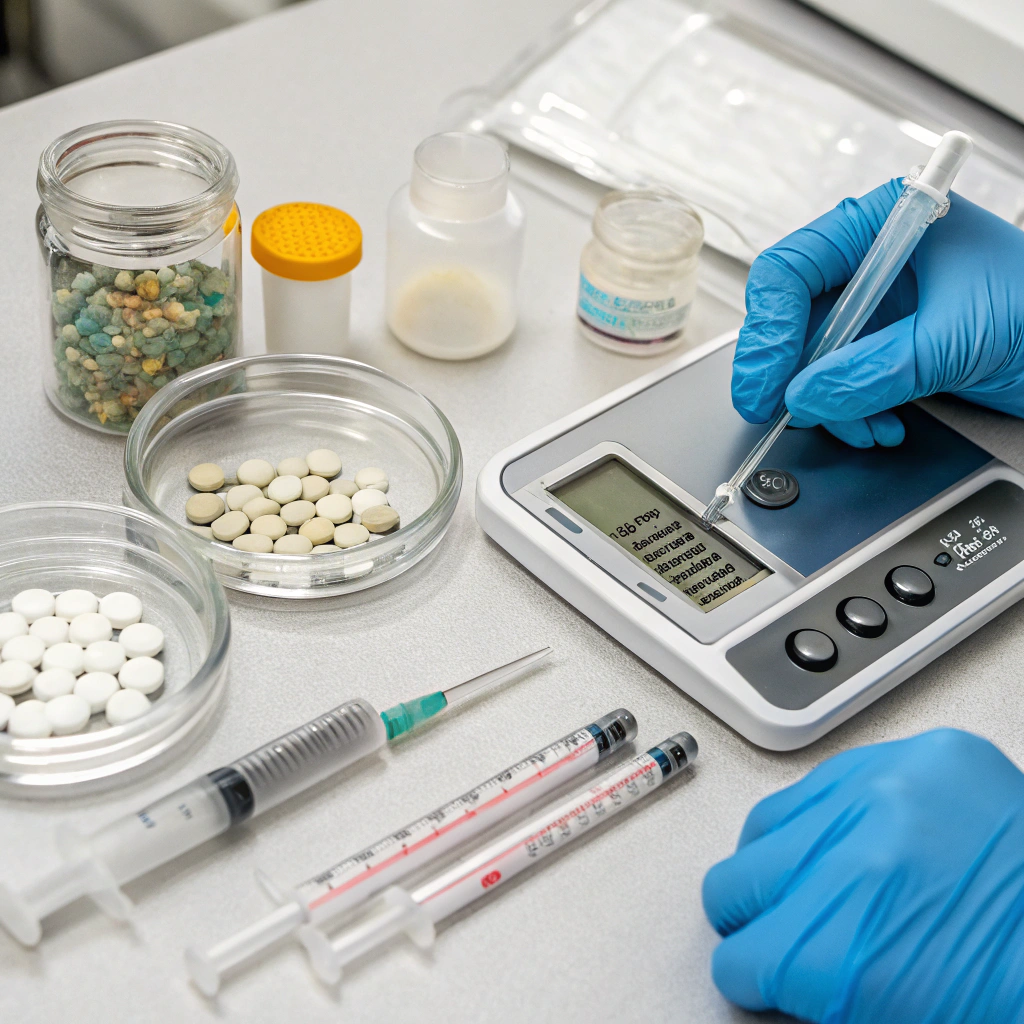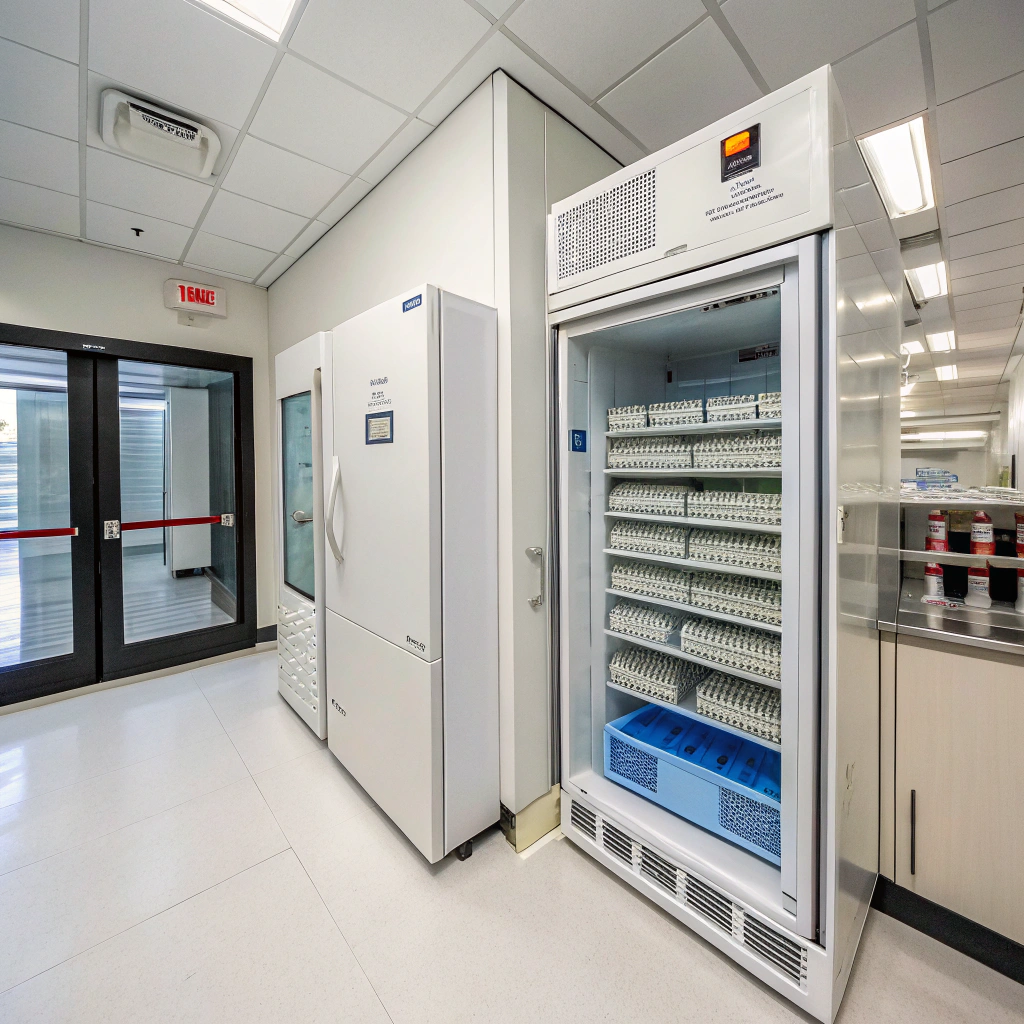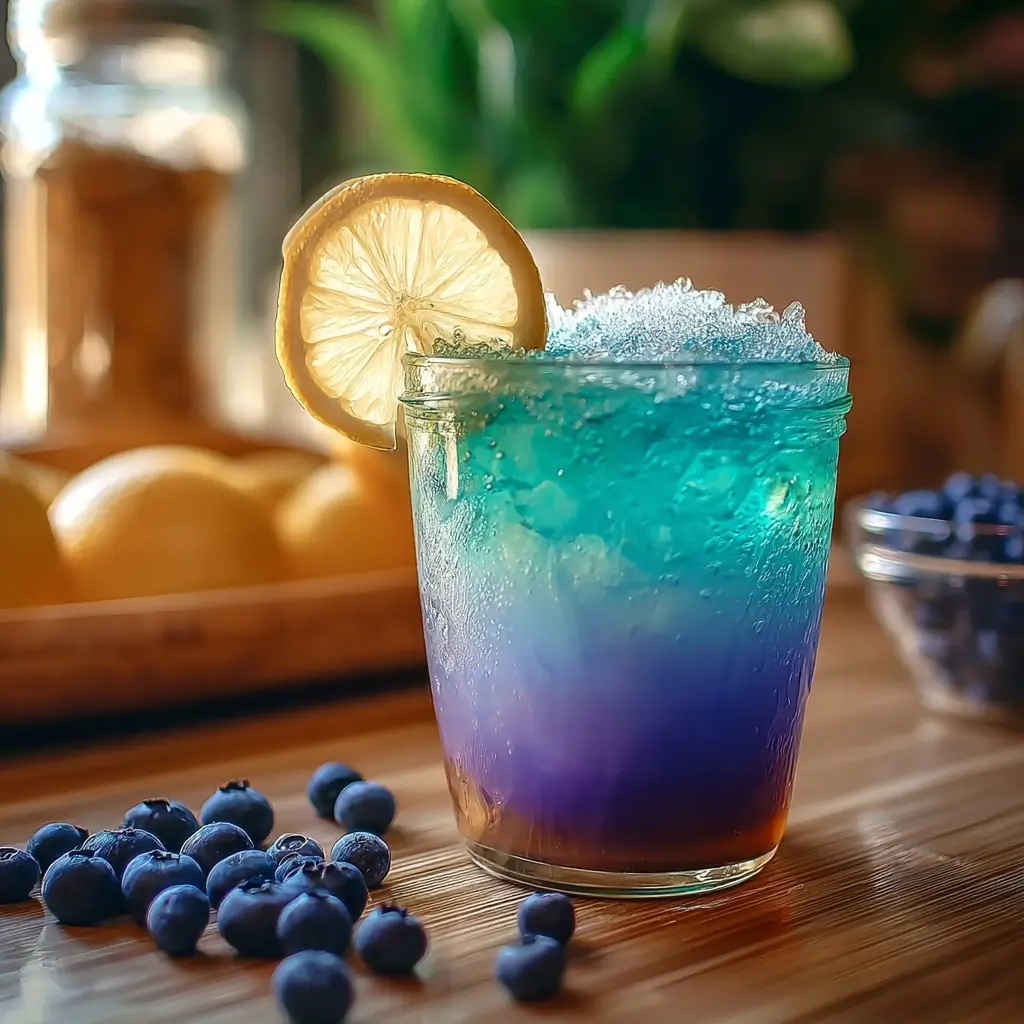With prescription Mounjaro costing $1,000+ monthly, thousands are exploring DIY alternatives – but safety must come first. The rising cost of prescription weight loss medications has led many to seek a homemade mounjaro recipe as an affordable solution. However, creating a homemade mounjaro recipe requires extensive medical knowledge, proper equipment, and strict safety protocols to avoid serious health complications.
This comprehensive guide addresses the critical safety considerations, detailed preparation methods, and essential storage requirements for those considering DIY alternatives under medical supervision. While we explore the technical aspects of creating homemade weight loss injections, it’s crucial to understand that any attempt at a homemade mounjaro recipe must be conducted with physician oversight to ensure safety and efficacy.
Table of Contents

Homemade Mounjaro Recipe
- Total Time: 10 minutes
- Yield: 2 servings 1x
Description
This Homemade Mounjaro Recipe is a vibrant, tangy drink inspired by health-conscious trends. Packed with antioxidants and natural ingredients, it’s perfect for boosting energy and supporting wellness. Customize it with optional add-ins like ginger or fruit juice for a personalized twist.
Ingredients
- 2 tablespoons dried butterfly pea flowers (food-grade)
- 1 teaspoon raw apple cider vinegar (with ‘the mother’)
- 1 teaspoon fresh lemon juice (freshly squeezed)
- 2 cups (500 ml) water (filtered or spring water recommended)
- 1 teaspoon honey or agave (optional, for sweetness)
Instructions
- Boil the Water: Bring 2 cups of water to a boil in a medium saucepan.
- Steep the Flowers: Remove from heat, add the butterfly pea flowers, and let steep for about 10 minutes.
- Strain (Optional): Use a fine mesh strainer to remove the flowers if you prefer a smoother drink.
- Add Lemon and Vinegar: Stir in the fresh lemon juice and apple cider vinegar. Watch as the color shifts magically from deep blue to vibrant purple!
- Sweeten (Optional): Add honey or agave for a touch of sweetness, if desired.
- Serve: Enjoy warm like tea or chill in the fridge for a refreshing cold beverage.
Notes
Tips & Variations:
- Ginger Twist: Add a slice of fresh ginger while steeping for a spicy kick and digestive benefits.
- Fruity Flavor: Mix in pineapple or orange juice for a tropical vibe.
- Iced Version: Pour over ice and garnish with fresh mint for a summer refresher.
- Batch Prep: Make a larger batch and store it chilled in the fridge for up to two days.
- Tangy Option: Skip sweeteners for a bold, tangy finish.
- Prep Time: 5 minutes
- Cook Time: 5 minutes
- Category: Drinks
- Method: No-Cook (after boiling)
- Cuisine: Brazilian
Nutrition
- Serving Size: 1 glass
- Calories: 30
- Sugar: 2g
- Sodium: 5mg
- Fat: 0g
- Saturated Fat: 0g
- Unsaturated Fat: 0g
- Trans Fat: 0g
- Carbohydrates: 6g
- Fiber: 0g
- Protein: 0g
- Cholesterol: 0mg
Essential Safety Warnings for Homemade Mounjaro Recipes
Before attempting any homemade mounjaro recipe, understanding the severe legal and health implications is paramount. The FDA has not approved any DIY formulations of tirzepatide, and creating pharmaceutical compounds at home carries significant risks that could result in hospitalization or worse.
FDA Regulations and Legal Considerations
Manufacturing pharmaceutical compounds without proper licensing violates federal regulations. The FDA safety warnings explicitly state that unapproved tirzepatide formulations pose serious health risks. Anyone considering a homemade mounjaro recipe must understand they’re operating in a legal gray area with potential criminal liability.
Compounding pharmacies require special licensing and regular inspections to ensure product safety. Home preparation lacks these critical oversight mechanisms, making contamination and dosing errors highly probable.
Medical Supervision Requirements
No homemade mounjaro recipe should ever be attempted without direct physician supervision. Medical professionals must monitor blood glucose levels, kidney function, and potential adverse reactions throughout the process. The complex pharmacokinetics of tirzepatide require careful titration based on individual patient responses.
Healthcare providers can access official prescribing information to understand proper dosing protocols and contraindications that apply to any DIY formulation.
Risk Assessment and Contraindications
Severe complications from improperly prepared injectable medications include sepsis, organ failure, and death. Patients with diabetes, kidney disease, or gastrointestinal disorders face elevated risks when using unregulated formulations. The precision required for peptide hormone preparation exceeds typical home laboratory capabilities.
Real-world incidents involving contaminated homemade injections have resulted in multiple hospitalizations, highlighting why medical supervision is non-negotiable for any homemade mounjaro recipe attempt.
Complete Homemade Mounjaro Recipe Ingredients List
Creating an effective homemade mounjaro recipe requires pharmaceutical-grade ingredients that are difficult and expensive to obtain legally. The active compound, tirzepatide, is a complex peptide hormone that requires specialized synthesis equipment and expertise.
Primary Active Compounds
The foundation of any homemade mounjaro recipe centers on tirzepatide peptide chains. Pharmaceutical-grade tirzepatide must be sourced from licensed chemical suppliers with proper documentation. Research-grade peptides from companies lacking GMP certification pose contamination risks.
Quality tirzepatide appears as a white crystalline powder with specific melting points and molecular weight verification. Clinical pharmacology research demonstrates that even minor structural modifications can eliminate therapeutic effects or create toxic metabolites.
Authentic tirzepatide requires storage at -20°C with desiccants to prevent degradation. Suppliers should provide certificates of analysis showing purity levels exceeding 98% for pharmaceutical applications.
Stabilizing Agents and Buffers
Professional formulations include sodium phosphate buffers, trehalose dihydrate, and polysorbate 80 for stability. These excipients prevent protein aggregation and maintain pH levels critical for biological activity in any homemade mounjaro recipe.
Buffer systems must be prepared with USP-grade chemicals and filtered through 0.22-micron filters for sterility. Improper buffering can cause peptide precipitation or pH fluctuations that destroy therapeutic activity.
Quality Standards for Each Ingredient
Every component in a homemade mounjaro recipe must meet pharmaceutical standards. Non-pharmaceutical ingredients can contain heavy metals, endotoxins, or organic contaminants that cause severe adverse reactions when injected.
Certificates of analysis should verify endotoxin levels below 10 EU/mg, heavy metal content within USP limits, and sterility through LAL testing. Home testing lacks the sensitivity to detect contamination levels that could prove dangerous.

Step-by-Step DIY Mounjaro Preparation Method
Preparing a homemade mounjaro recipe requires laboratory-grade equipment and sterile techniques that exceed typical home capabilities. The complex preparation process involves multiple steps where contamination or measurement errors can create dangerous products.
Equipment Setup and Sterilization
Essential equipment includes analytical balances accurate to 0.1mg, laminar flow hoods, autoclaves, and sterile filtration systems. All glassware must undergo steam sterilization at 121°C for 15 minutes minimum. Work surfaces require 70% isopropyl sanitization between each step.
Personal protective equipment including sterile gloves, face shields, and lab coats prevents contamination during preparation. The workspace must maintain positive air pressure with HEPA filtration to minimize particulate contamination.
Temperature monitoring throughout the process ensures peptide stability. Preparation areas should maintain 15-25°C with humidity below 60% to prevent degradation of sensitive compounds.
Precise Mixing Procedures
Reconstitution begins with adding sterile water for injection to buffer salts, creating the base solution for any homemade mounjaro recipe. The tirzepatide powder must be added slowly with gentle swirling to prevent foaming that can denature the protein structure.
pH adjustment requires careful monitoring with calibrated meters, maintaining levels between 7.0-8.0 for optimal stability. Temperature must remain below 25°C during mixing to prevent thermal degradation of the peptide chains.
Mixing ratios follow strict pharmaceutical calculations: 2.5mg tirzepatide per 0.5mL final volume for standard concentrations. Each component addition requires documentation with timestamps and temperature readings for quality control.
Quality Control Testing
Visual inspection checks for particulates, color changes, or precipitation indicating formulation failure. pH testing confirms proper buffering, while osmolality measurements ensure injection compatibility.
Sterility testing through membrane filtration onto growth media can detect microbial contamination, though results require 14-day incubation periods. Home laboratories lack the equipment for comprehensive quality testing that pharmaceutical facilities perform.
Potency verification requires HPLC analysis comparing against pharmaceutical standards, equipment costing tens of thousands of dollars and requiring specialized training to operate properly.
Proper Storage and Handling of Homemade Mounjaro
Maintaining the stability and safety of any homemade mounjaro recipe depends on strict storage protocols that preserve peptide integrity while preventing microbial growth. Improper storage can transform therapeutic compounds into dangerous toxins.
Refrigeration Requirements
Prepared solutions require storage at 2-8°C in pharmaceutical-grade refrigerators with continuous temperature monitoring. Standard household refrigerators experience temperature fluctuations that can destabilize protein structures in homemade formulations.
Storage containers must be made from borosilicate glass or pharmaceutical-grade plastics that don’t leach additives into the solution. Comprehensive medication guides emphasize that temperature excursions above 30°C for more than 24 hours render the medication ineffective.
Freezing must be avoided as ice crystal formation destroys peptide structure irreversibly. Temperature logging devices should track storage conditions continuously to validate product integrity.
Sterility Maintenance
Multi-dose vials require benzyl-based preservatives to prevent bacterial growth, but many homemade mounjaro recipe attempts omit these critical components. Without proper preservation, solutions become contaminated within days of preparation.
Withdrawal procedures must maintain sterility through proper needle techniques and aseptic handling. Each vial puncture introduces contamination risk that increases with multiple uses.
Expiration and Disposal Guidelines
Homemade preparations lack stability data, making expiration dating impossible without extensive testing. Conservative estimates suggest 7-14 day maximum storage even under ideal conditions, significantly shorter than commercial formulations.
Disposal requires treatment as pharmaceutical waste through authorized medical waste companies. Improper disposal through household waste streams violates environmental regulations and poses public health risks.
Dosage Calculations for DIY Mounjaro Injections
Accurate dosing represents the most critical aspect of any homemade mounjaro recipe, as miscalculations can result in severe hypoglycemia, kidney damage, or treatment failure. Professional dosing protocols require careful patient assessment and gradual titration.
Starting Dose Recommendations
Initial doses should mirror pharmaceutical protocols: 2.5mg once weekly for the first four weeks. This allows assessment of individual tolerance and glucose response patterns before dose escalation.
Patient weight, diabetes status, and kidney function influence appropriate starting doses. Patients over 100kg may require adjusted calculations, while those with impaired renal function need dose reductions to prevent accumulation.
Volume calculations for homemade preparations: 2.5mg dose = 0.5mL injection volume at standard 5mg/mL concentration. Measurement errors become significant with smaller volumes due to syringe accuracy limitations.
Titration Schedule Planning
Dose increases follow predetermined schedules: 2.5mg → 5mg → 7.5mg → 10mg → 12.5mg → 15mg maximum. Each increase requires 4-week intervals to assess tolerance and efficacy.
Gastrointestinal side effects often limit dose escalation speed. Patients experiencing significant nausea or vomiting should maintain current doses until symptoms resolve before advancing to higher levels.
Blood glucose monitoring becomes essential during titration, particularly for diabetic patients who may require medication adjustments to prevent dangerous hypoglycemic episodes.
Individual Adjustment Factors
Age-related considerations include slower clearance in elderly patients requiring dose modifications. Patients over 65 may need extended titration schedules with more conservative maximum doses.
Concurrent medications can affect dosing requirements. GLP-1 agonists must be discontinued before starting any homemade mounjaro recipe to prevent additive effects that could cause severe hypoglycemia.
Kidney disease staging directly impacts appropriate dosing. Patients with creatinine clearance below 30 mL/min require dose reductions and more frequent monitoring for adverse effects.
Cost Analysis: Homemade vs Prescription Mounjaro
The financial motivation driving interest in homemade mounjaro recipe options stems from prescription costs exceeding $12,000 annually without insurance coverage. However, comprehensive cost analysis reveals hidden expenses that reduce apparent savings.
Ingredient Cost Breakdown
Pharmaceutical-grade tirzepatide costs $200-400 per gram from legitimate suppliers, with each gram providing approximately 20 weekly doses. Additional excipients, buffers, and preservatives add $50-100 to ingredient costs per batch.
Quality testing services for sterility, potency, and purity verification cost $300-500 per batch through independent laboratories. Without testing, users risk injecting contaminated or inactive preparations.
Shipping requirements for temperature-controlled peptides add $75-150 per order, as dry ice shipping maintains cold chain integrity during transport.
Equipment Investment Requirements
Initial equipment costs include analytical balance ($2,000-5,000), pH meter ($500-1,000), sterile filtration setup ($300-800), and storage refrigerator ($400-800). Professional-grade laminar flow hoods cost $5,000-15,000 for proper contamination control.
Consumable supplies including sterile vials, filters, syringes, and needles cost $100-200 per batch. Calibration services for critical equipment add $200-500 annually to maintain measurement accuracy.
Safety equipment including fume hoods, emergency showers, and spill kits represent additional significant investments required for safe peptide handling.
Long-term Savings Potential
Break-even analysis suggests 12-18 months before equipment costs are recovered through ingredient savings. However, this calculation assumes successful preparation without contamination losses or preparation failures.
Risk-adjusted savings must account for potential medical costs from adverse reactions, contaminated preparations, or dosing errors. Emergency room visits from injection site infections cost thousands of dollars, eliminating years of potential savings.
Insurance implications include potential policy violations for using non-prescribed medications, which could result in claim denials for related medical treatments.

Frequently Asked Questions About Homemade Mounjaro Recipe
Is making homemade mounjaro recipe legal and safe?
Creating homemade mounjaro recipe formulations operates in a legal gray area that likely violates FDA manufacturing regulations. While not explicitly illegal for personal use, the safety risks are substantial due to contamination potential, dosing errors, and lack of quality control. Medical supervision is absolutely essential, and many physicians refuse to oversee such preparations due to liability concerns and patient safety risks.
How much does DIY mounjaro cost compared to prescription?
A homemade mounjaro recipe can cost $300-600 per month including ingredients and supplies, compared to $1,000+ for prescription versions. However, initial equipment investments of $8,000-25,000 must be amortized over multiple years. Quality testing adds $300-500 per batch, and contamination losses can double actual costs. Risk-adjusted calculations including potential medical complications significantly reduce apparent savings.
What ingredients do I need for homemade mounjaro recipe preparation?
Essential components include pharmaceutical-grade tirzepatide peptide, sodium phosphate buffers, trehalose dihydrate stabilizer, polysorbate 80 surfactant, and sterile water for injection. All ingredients must meet USP standards with certificates of analysis verifying purity, endotoxin levels, and sterility. Research-grade chemicals lack the quality standards necessary for safe injection and should never be used in homemade preparations.
How long does homemade mounjaro last in storage?
Homemade formulations lack stability data and should be used within 7-14 days when stored at 2-8°C in sterile conditions. Commercial formulations undergo extensive stability testing to establish 24-month expiration dates, testing that’s impossible in home laboratories. Temperature excursions, light exposure, or contamination can reduce stability to hours or days, making homemade preparations inherently unpredictable.
Can homemade mounjaro be as effective as prescription versions?
Theoretically, properly prepared homemade formulations using identical ingredients could match prescription effectiveness. However, achieving pharmaceutical-grade quality requires equipment, expertise, and testing capabilities that exceed home laboratory capabilities. Peptide degradation, contamination, or formulation errors typically result in reduced or eliminated therapeutic activity. Without proper testing, effectiveness cannot be verified.
What are the risks of DIY mounjaro injections?
Severe complications include sepsis from bacterial contamination, toxic reactions from chemical impurities, dangerous hypoglycemia from dosing errors, and injection site infections. Peptide degradation products can trigger immune reactions, while pH errors cause tissue damage. The complex pharmacology of tirzepatide requires medical expertise to monitor for kidney damage, pancreatitis, and drug interactions that could prove fatal without proper supervision.
The appeal of a homemade mounjaro recipe is understandable given the substantial cost savings potential, but the safety risks and technical challenges make this approach unsuitable for most individuals. The complexity of pharmaceutical manufacturing exists for critical safety reasons that cannot be replicated in home laboratories. For those interested in salt-based remedies for men’s health or other natural approaches, safer alternatives may provide weight management benefits without the severe risks associated with DIY injectable medications.
Medical supervision remains absolutely essential for anyone considering homemade pharmaceutical preparations. The potential for serious adverse events, legal complications, and treatment failures far outweigh the apparent cost savings. Instead, patients should explore prescription assistance programs, insurance appeals, or more health-focused recipes that support sustainable weight management through safer, more sustainable approaches.
If you’re struggling with medication costs, consult with healthcare providers about legitimate alternatives rather than risking your health with unregulated homemade mounjaro recipe preparations. Your safety and wellbeing are worth more than any potential savings from dangerous DIY pharmaceutical manufacturing.

